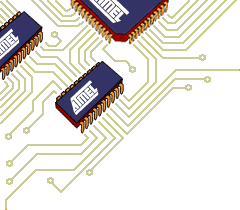Flash Memory/DataFlash
Flash Memory- Parallel Flash
Atmel offers parallel Flash memories in a variety of configurations and architectures to address the unique requirements of today's applications. Our first generation AT29 series devices were developed for applications requiring updates of small portions of data throughout the memory array. The AT29 Series most notable feature is the small sector sizes ranging from 64K-256K. These small sectors create an ideal solution for both program code and data storage. The AT29 series devices are available in densities of 256K to 4 Mb in single voltage 5V, 3V and 2.7V options. The AT49 Series Flash devices feature Atmel's advanced NVM CMOS processing, single-voltage operation, fast access and erase times and low power operation. The AT49 series family includes Boot Flash, Parametric Flash and Concurrent Flash TM categories. The Boot Flash is ideal for basic program code applications. The Parametric Flash is developed to meet the requirements of system BIOS applications. And the Concurrent Flash is developed to meet the new requirements of mobile phones, networking and set-top boxes. These devices are available in densities of 512K-32 Mb in x8 and x16 configurations with voltage options of 5V down to 2.7V.
DataFlash®- Serial Flash
The AT45 Series DataFlash complements our extensive offering of AT29XXX and AT49XXX
single-voltage program Flash memory devices, now giving users a nonvolatile memory solution
for data storage applications such as voice, image or text. The DataFlash can also be used
effectively in program code shadowing applications as well. By using a serial Flash for the code
storage, ASIC pin counts can be drastically reduced which will lower overall system costs. In
addition, the DataFlash can be used to store any parametric data, thereby giving designers a
single memory device for storing code and data.
The DataFlash was designed to easily and efficiently handle large amounts of frequently changing data by incorporating features such as small page sizes (264 to 528 bytes), internal RAM buffers, a simple serial interface, and a flexible command set. DataFlash devices are produced using Atmel's proven NOR Flash architecture and are available in both 5V and 2.7V versions to give users a Flash family that can meet their nonvolatile data storage requirements.
Hot Topics
Datasheets
Application Notes
Support Tools
Product Selector
Flash Memory | DataFlash






